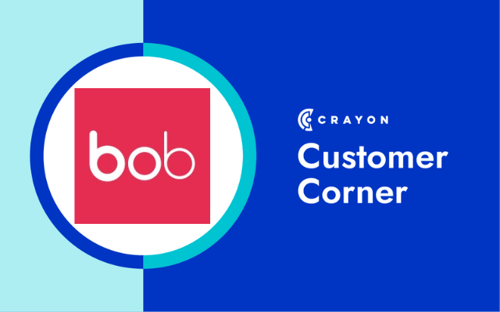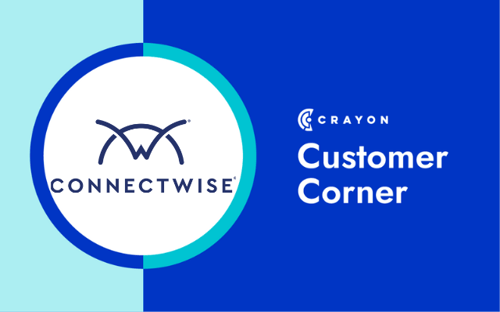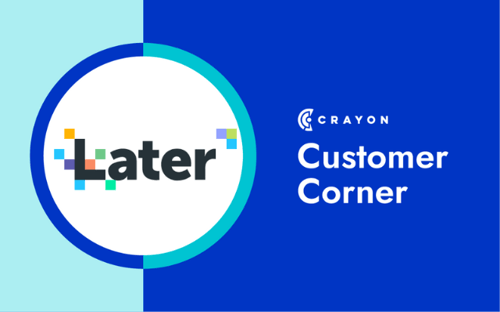There is no adequate way to express the effect COVID-19 has had on society. It’s changed the way we live and the way we work. Competitive intelligence (CI) might seem like an “extra” in the time of COVID, but it’s more crucial to your bottom-line now more than ever.
Here are three lessons we’ve learned about competitive intelligence for businesses in the era of COVID-19.
Lesson #1: Every Single Deal Matters and Good Competitive Intel Equals More Revenue
CI is about driving action. It’s not enough to simply push CI to stakeholders and have no action being taken as a result. This causes competitive intelligence to become a nice-to-have at best and a cost-center at worst. When CI is used to drive action, it becomes critical to revenue generation.
The current scarcity of deals increases the likelihood of a competitor being present in a deal, so you need to ensure that you're setting up your CI to be easily leveraged by your sales team.
Here are a few ways you can use CI to help sales win deals:
- Battlecards: Provide your sales team with competitive battlecards. Making sure battlecards are easily accessible and up-to-date with the most current CI will enable your sales team to knock competitors out of deals quickly.
- Deep Dive Competitive Training: Take time to sit with sales and do a deep dive into one of your chief competitors. Add role-playing into the training so sales can get practice on selling against that specific competitor.
- Leverage Field Intel: Your reps spend all day talking to prospects, and in doing so, they gather excellent intel on your competition. Give sales the ability to share great field intel so they can help their fellow reps win more deals.
Lesson #2: There Are More Competitive Signals Being Put Out There Than Ever Before
While sales have been declining, marketing engagements have increased significantly, specifically marketing email open rates and website visits. Meaning, buyers might not be ready to sign a check quite yet, but they are certainly looking to educate themselves with content and virtual events in the meantime.
This means that your competitors’ marketing teams are likely putting out more content and campaigns than ever before, both on and off their website. Tracking and analyzing these signals is crucial to understanding your competitors’ strategies, and since there is more of an emphasis on engaging and educating prospects, there are now more competitive signals to glean intelligence from.
Here are some competitive signals you should be keeping an eye out for:
- Messaging Changes: Track your competitors’ homepages and other website pages for any changes in messaging—it will signal how they are adjusting their strategy during the COVID era.
- Employer Reviews: Find out what former and current employees of your competitors’ are saying about them. Employee reviews can give you visibility into competitor strategy like what investments (or lack thereof) are being made. Glassdoor now lets you filter reviews by “COVID-19” so you can see how your competitors are handling the crisis internally.
- Marketing Campaigns: Marketing teams are putting out more content than ever to educate and engage buyers. Keep track of your competitors’ social media campaigns, content initiatives, and virtual events to see how they are currently engaging the market.
Lesson #3: Optimal Distribution is Key to Getting Stakeholders to Take Action on CI
Remote work is the new reality, and with that comes certain challenges. You may feel like competitive intelligence is being ignored if you aren’t interacting with your stakeholders in-person, or that some context is being lost.
The key to getting others to take action on CI is to deliver it to them in a format that is optimal for their consumption. Stakeholders all have different needs—sales needs to win more deals, executives need guidance on strategy, marketing needs to understand messaging and campaigns, and product needs to understand the competitor roadmap. In addition to having different needs, your stakeholders consume information differently. Tailor your information and communication method for each stakeholder.
Here are examples of how you can distribute competitive intelligence to different stakeholders:
|
Stakeholder |
Goal |
Intelligence Types |
CI Format |
|
Executive Team |
Guidance on strategy |
Team changes, financial data (SEC filings, etc.), messaging changes, new customers and partners |
Dashboards, weekly CI digests, periodic CI updates via remote meetings |
|
Sales |
Win more deals |
Pricing changes, messaging changes, positive/negative product reviews, employee reviews |
Battlecards, intel updates via chat (Slack, etc.), competitor trainings |
|
Marketing |
Run better campaigns |
Website changes, messaging changes, marketing campaigns, social media activity |
Weekly CI digests, alerts of high priority shifts |
|
Product |
Roadmap guidance |
Team changes, new customers and partners, positive/negative product reviews, product updates, pricing and packaging changes |
Dashboards, weekly CI digests, alerts for high priority shifts |
Embracing the New Way of Working
No one can predict the future, but we all must adapt to our present reality. There will likely be more changes coming down the road for businesses, and the best you can is do your best to be cognizant of trends and continue to enable your teams and serve your customers.

Related Blog Posts
Popular Posts
-
 The 8 Free Market Research Tools and Resources You Need to Know
The 8 Free Market Research Tools and Resources You Need to Know
-
 How to Measure Product Launch Success: 12 KPIs You Should Be Tracking
How to Measure Product Launch Success: 12 KPIs You Should Be Tracking
-
 24 Questions to Consider for Your Next SWOT Analysis
24 Questions to Consider for Your Next SWOT Analysis
-
 How to Create a Competitive Matrix (Step-by-Step Guide With Examples + Free Templates)
How to Create a Competitive Matrix (Step-by-Step Guide With Examples + Free Templates)
-
 6 Competitive Advantage Examples From the Real World
6 Competitive Advantage Examples From the Real World





